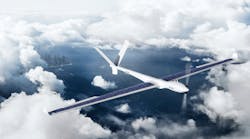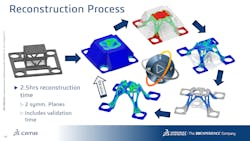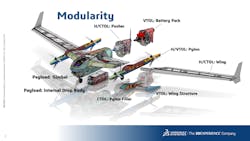Change is one of the biggest constants in today’s digital environment. For many manufacturers change means being nimble enough to continuously improve product designs. Unfortunately, this can be a steep challenge using traditional approaches.
In a recent IndustryWeek webinar, Dassault Systems Solutions Consultant Ryan Benyshek walked through the process of using the 3DExperience to complete a subsystem generative design iteration on a small unmanned aerial system (sUAS).
Available as an on premise or cloud platform, 3DExperience enables manufacturers to quickly complete product iterations in one connected and integrated platform, ultimately avoiding common issues when depending on disparate systems to talk with one another. In this example, it enabled global teams to collaboratively and seamlessly work together to address engineering and manufacturing requirements, setup and validation.
“Normally, it's over a year long process of designing a small unmanned aerial system that's ready for first flight,” he says. “We took that design process and cut it down to four months.”
Case in Point
Weight is always an issue when designing and producing an sUAS. Specifically, FAA requirements dictate keeping it under 55 pounds, which is challenging considering all the different systems and subsystems needed to build a search and rescue style drone.
Optimizing the gimbal serves as a perfect example. The legacy gimbal mount plate was a waterjet aluminum bracket with a box enclosure to handle the torque and downward force loads. Unfortunately, at 400 grams, it’s quite heavy. The goal was to get the bracket weight down about 200 grams.
Of course, as with any design there are some restrictions and requirements that must remain constant. For instance, a loads analysis specifies that the mount plate should not be less than 45 grams. Additionally, it needs to hold two cameras which dictates overall dimensions and so on.
When doing generative design, setting the restrictions and applying load or displacement constraints creates constants, while still providing freedom to create a more optimized structure. Constraints can also help in determining which materials and processes make sense.
3DExperience allows the user to quickly modify the model unlike historical processes of reverse engineer. Instead users can just start morphing all these nodes around and pulling and kind of sculpting the model with organic servicing.
Before considering any design final, it is crucial to put it through a validation process. With 3DExperience, all the loads are automatically transferred as well as design space specifications automating the validation process whether the goal is shape validation, stress results or trade off studies.
When design iterations are complete and validated, the next step is to verify slicing setups in the manufacturing workbench. Next, with one click you can create a thermal mechanical simulation to identify warping issues. All the parameters (initial temperatures, material depositions, cooling variants, etc.) should be familiar when running the additive manufacturing simulation. With this simulation, you can address the deviation field, and making any needed modifications.
According to Benyshek, although the example leveraged additive manufacturing, generative design is applicable to all production processes as well. Additive manufacturing just serves as a good example because the geometric freedoms allow for very complex shapes.
Likewise, the same collaboration techniques can be applied to designs within technology, transportation, mobility sectors, explains Benyshek. “Anything with very complex engineering problems and systems requirements, or in any instance where it is crucial to speed up the iteration process to get multiple iterations done very quickly,” he says.
Check out the IndustryWeek webinar to watch each step of the design optimization process.






